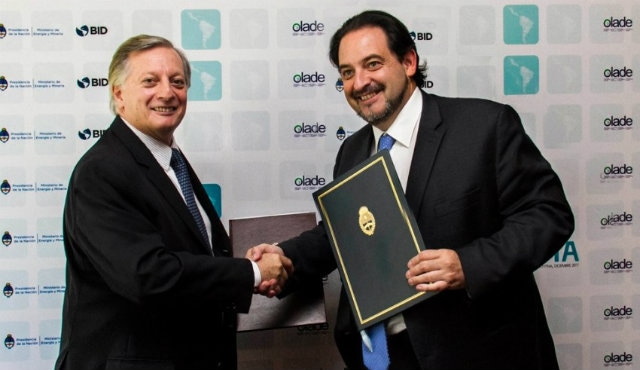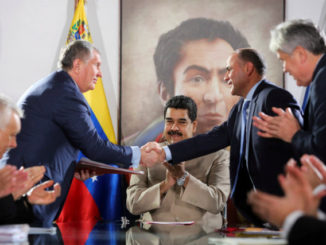
BUENOS AIRES – Energy ministers from Chile, Andrés Rebolledo, and from Argentina, Juan José Aranguren, signed a bilateral agreement in Buenos Aires that will allow increasing energy exchange, both electricity and natural gas.
The agreement, under the energy swap modality, establishes the regulatory framework through which the natural gas and electricity exchanges will be made on either side of the mountain range, and considers as conditions for its realization the supply of temporary or seasonal deficiencies of the respective resource in the destination country; supply temporary lack of supply generated by emergency situations or public calamity; and transport electricity or natural gas through the networks of both countries, in order to supply areas of a country that are not directly connected to the point of origin of energy in the same country.
In this way Argentina will return to export natural gas to Chile after 10 years, after the crisis that implied the unilateral cut of shipments in the midst of the energy deficit that the country went through.
“This agreement opens a new stage in the energy relationship between Chile and Argentina, and leaves behind complex situations that we lived a few years ago. This energy swap will allow us to complement our energy resources, and also better deal with potential emergency situations with mutual support in case of gas or electricity supply problems,” said Chilean Energy Minister Andrés Rebolledo.
Currently, there is an electric line that connects both countries, which goes from the Antofagasta zone to Salta, and the connection feasibility is studied in five other points of the North and South Center. In the case of natural gas, there are seven gas pipelines that connect both countries: NorAndino and Gas Atacama in the northern zone; GasAndes in the center; Gasoducto del Pacífico in the Biobío Region; and the Posession 1 and 2 and Frontera gas pipelines in the south of the country.
Likewise, Chile has two liquefied natural gas regasification terminals in the north and center, which have a joint regasification capacity of 20 million cubic meters per day.
This agreement will also allow the incorporation of natural gas in the Biobío area, where there is a potential demand from the industrial sector and electricity generation, which would be supplied from the Vaca Muerta field in the province of Neuquén.
This would make it possible to reduce the use of fuels with a higher level of emissions of particulate matter and sulfur derivatives in the area, such as wet wood for homes and Fuel Oil 6. The protocol states that the gas injected from Vaca Muerta into the region of Biobío would be compensated with a regasified natural gas supply operation at the terminals of Mejillones or Quintero, and sent to the main consumption center in Argentina, that is, the Province of Buenos Aires.
The negotiations for the signing of this agreement started in 2014, but intensified during the last year, with a series of meetings between the ministers and the technical teams of both countries, which concluded with the signature of the document in Buenos Aires.



